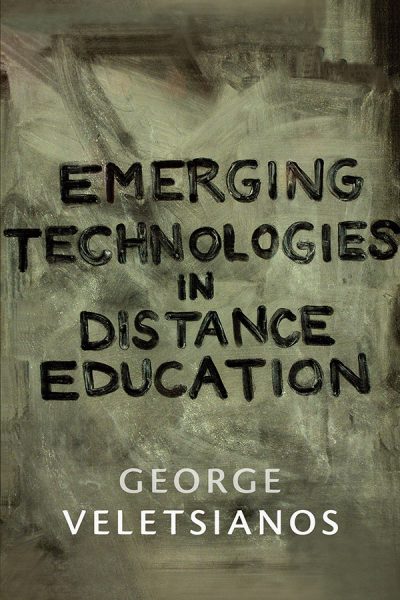A one-stop knowledge resource, Emerging Technologies in Distance Education showcases the international work of research scholars and innovative distance education practitioners who use emerging interactive technologies for teaching and learning at a distance.
This widely anticipated book harnesses the dispersed knowledge of international experts who highlight pedagogical, organizational, cultural, social, and economic factors that influence the adoption and integration of emerging technologies in distance education. Emerging Technologies in Distance Education provides expert advice on how educators can launch effective and engaging distance education initiatives in response to technological advancements, changing mindsets, and economic and organizational pressures. The volume goes beyond the hype surrounding Web 2.0 technologies and highlights the important issues that researchers and educators need to consider to enhance educational practice.
About the Editor
George Veletsianos is a professor in the School of Education and Technology at Royal Roads University and holds a Canada Research Chair in Innovative Learning and Technology. His research is dedicated to understanding the practices and experiences of learners, educators, and scholars in emerging online settings. His presentations, publications, and most recent thoughts on education can be found at www.veletsianos.com.
Reviews
This book is a valuable resource for the distance education community, because it shows innovative examples of teaching with emerging technologies. Its strength is that it can be used by a variety of audiences, from instructors to instructional designers, in pieces or as a whole. It provides accessible examples of research and practice for educators and professionals within the field, as well as an entry-point for students and novice distance educators. Personally, I have found this book to be useful in my role as a professor, as an instructional designer and as a student and I think that other educators in the field would also benefit from the information within.
Educational Technology Research and Development
Table of Contents
- Introduction / George Veletsianos
- Part I. Foundations of Emerging Technologies in Distance Education
- 1. A Definition of Emerging Technologies for Education / George Veletsianos
- 2. Theories for Learning with Emerging Technologies / Terry Anderson
- 3. Imagining Multi-Roles in Web 2.0 Distance Education / Elizabeth Wellburn and B. J. Eib
- 4. Beyond Distance and Time Constraints: Applying Social Networking Tools and Web 2.0 Approaches in Distance Education / Mark J. W. Lee and Catherine McLoughlin
- Part II. Learning Designs for Emerging Technologies
- 5. “Emerging”: A Re-Conceptualization of Contemporary Technology Design and Integration / The Learning Technologies Collaborative
- 6. Developing Personal Learning Networks for Open and Social Learning / Alec Couros
- 7. Creating a Culture of Community in the Online Classroom Using Artistic Pedagogical Technologies / Beth Perry and Margaret Edwards
- 8. Structured Dialogue Embedded within Emerging Technologies / Yiannis Laouris, Gayle Underwood, Romina Laouri, and Aleco Christakis
- Part III. Social, Organizational, and Contextual Factors in Emerging Technologies Implementations
- 9. Personal Learning Environments / Trey Martindale and Michael Dowdy
- 10. Learning, Design, and Emergence: Two Case Studies of Moodle in Distance Education / Andrew Whitworth and Angela Benson
- 11. Institutional Implementation of Wikis in Higher Education: The Case of the Open University of Israel (OUI) / Hagit Meishar-Tal, Yoav Yair, and Edna Tal-Elhasid
- 12. The Use of Web Analytics in the Design and Evaluation of Distance Education / P. Clint Rogers, Mary R. McEwen, and SaraJoy Pond
- 13. New Communications Options: A Renaissance in Videoconference Use / Richard Caladine, Trish Andrews, Belinda Tynan, Robyn Smyth, and Deborah Vale
- Part IV. Learner-Learner, Learner-Content, and Learner-Instructor Interaction and Communication with Emerging Technologies
- 14. Using Social Media to Create a Place that Supports Communication / Rita Kop
- 15. Technical, Pedagogical, and Cultural Considerations for Language Learning in MUVEs / Charles Xiaoxue Wang, Brendan Calandra, and Youngjoo Yi
- 16. Animated Pedagogical Agents and Immersive Worlds: Two Worlds Colliding / Bob Heller and Mike Procter
- Conclusion / George Veletsianos
- Contributors / Index
This work is licensed under a Creative Commons License (CC BY-NC-ND 2.5 CA). It may be reproduced for non-commercial purposes, provided that the original author is credited.
